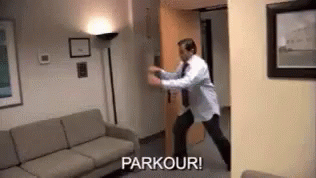5 Ways for Marketers to Think Outside the Box
In this discussion with Sally Dominguez, we dive into the concept of Adventurous Thinking, and the five lenses Dominguez urges you to look through when trying to break away from the norm in your marketing strategy. During the best of times, innovative marketing strategies can help your brand stand out, but during crises like the current COVID-19 pandemic, adventurous thinking can make or break your brand’s future.
As conferences and their leads disappear and social media is overwhelmed with ads from every industry, your marketing cannot be a cookie-cutter process right now. You need an outside the box approach. To get yourself and your team in a creative mindset, let’s dive into Dominguez’s five lenses for innovative thinking.
The Five Lenses of Innovative Thinking
To preface this section on the Five Lenses, we pulled an excerpt from Dominguez’s Adventurous Thinking (AT) site to set the stage: “Each Lens provokes a distinct and extreme point of view in a simple, comprehensible framework. Used as a set, the Lenses pluralize an existing product, system or environment to reveal its multiple meanings, and work as tools to push individuals and teams outside their “expert” neural pathways for more diverse ideas and solutions.”
As you can guess, each of these lenses has its own values and challenges. If you’re working through them correctly, you will be forced to think outside the box and extend your boundaries. In a recent Mission Critical video with Greg Mischio, Dominguez shared this nugget about addressing change with those who might be opposed: “You must find a common emotional ground to make a dent in change. Some people will not want to get out of their comfort zone.”
When thinking about undergoing this process, make sure you’ve convinced yourself, as well. For some reading this, the person most resistant to change on your team is you. Expand yourself right now and listen to the ideas of your creative thinkers, and of the creative side of your brain for a change. Now’s the time to try that bold idea you’ve been tossing around for far too long.
Expand your Thinking
To test yourselves and open your business to new ideas, you can view your strategies through Dominguez’s five lenses: negative space, thinking sideways, thinking backwards, rethinking, and parkour.
These five unique lenses allow you to examine your business with fresh eyes and new perspectives, something that is great at all times, but is especially important in times of crisis like our current landscape. .
Negative Space

If you consider the black image of Batman the positive space, then the white, face of the Joker is the negative space, allowing the painting to fully leverage all the space in the piece.
According to AT, “Negative Space is that physical, emotional and longitudinal amorphousness that is NOT the focus or the subject.” Negative space is everything about your strategy that is NOT the focal point, the external opportunities you pass on to stick with the standard plan.
This is seen in art – where purposeful empty space often tells a story as much as the focus of the painting, like our DC Comics favorite featuring Batman and the Joker to the right.
To help clarify this concept, Dominguez added: “When thinking about the ‘negative space’ of a situation, you imagine a box with a number of items floating in it. The items in the box are the positive space, but the negative space is everything else.”
For marketers, what else can you be doing with your marketing space?
Negative Space for Marketers
There are infinite opportunities to leverage negative space in the marketing world. “Most marketing in the context of this black swan event feels displaced right now. The negative space here is simple: when do people NOT want to hear about what you’re doing?”
When you delve into what people don’t want to hear or see, you often see avenues you weren’t considering. In the current climate, Dominguez notes “the negative space is in the crazy amount of overwhelming white noise on COVID-19. There are lots of physical marketing practices that are not being leveraged right now.”
“More noise happens on the mobile device and communications platforms,” she adds. “And in the physical world, fewer people are seeing billboards and bus wraps.”
So, what negative space can you leverage in this crisis? What channels are a better use of your time than simply contributing to the white noise?
Consider focusing on an automated chat marketing strategy to help improve your inbound marketing process. Or perhaps work on a cornerstone content asset to deploy when the time comes. Your negative space will be unique to your team, but it is waiting with opportunities.
Thinking Sideways
The second lens Dominguez discussed is thinking sideways, and it’s described on the AT site as “an extension of ’empathetic thinking.’ Thinking sideways builds awareness of how our personal preferences dictate the way we interact with others – work colleagues and customers.” According to the site, “sideways thinking is valuable for understanding how your personal tendencies might be compromising your decision-making and interactions.”
This one feels a bit more straightforward, as everyone is guilty of giving in to internal biases from time to time. Take a moment and self-audit yourself.
Per Dominguez, “when you have implicit bias, you can’t change it. You can understand it, but you can’t change it.” She wants you to be cognizant of your own flaws, and to help set you on the right path, she has a few strategies, including this pair of thinking tools.
The DeTEST Tool
The DeTEST tool is a simple tool, but it’s also one that will push you out of your comfort zone. Dominguez explains it simply: “Ask yourself this question: ‘what is a way of communicating that you would absolutely detest doing, however, if you did do it, it would be REALLY effective?”
She encourages you to push yourself to think about what you could do that’s crazy and ridiculous… yet would be really successful. Throw out laws and ethics and think big picture. Then ask: how can you do this thing, without breaking legal or ethical rules? By thinking about the big ask first, then scaling to something more feasible, you open up to your team’s creativity.
Dominguez says: “It’s a version of moonshot thinking, a massive extreme using disruptive thinking that you pull back just enough to do it for real.” The DeTEST tool is a really useful exercise that throws you into a place you might never go.
The Age Tool
Another outside-the-box thinking technique Dominguez recommends is the Age Tool. Typically, you are marketing to specific demographics and a specific target audience. But rethinking the way you outreach can have unforeseen benefits.
Dominguez recommends thinking about how you’d sell your product to a totally different audience, maybe elementary school kids or elderly people. She then encourages you to think about how you can do what you do and still be effective when only reaching out to these new audiences.
“Magic happens on the edge of chaos,” said Dominguez of the age tool. She talks of big ideas that spawn when you think sideways.
Thinking Backwards
The middle lens shares similarities with the second, but adds a different perspective to your audit. Per AT, “Thinking Backwards uses information to consider where a project or product ends, and how the elements and functions that make up a product, system or campaign can be improved for a more precise, economical, robust result.”
Dominguez mentioned this is the most difficult to explain, and starts by explaining the concept of back-casting to those who haven’t heard it before: “Thinking backwards involves backcasting to make sure all elements and key functions are leading to the correct end-goal.”
She then encourages you to ask yourself how to achieve your goal in half the time you originally projected. With the expedited time frame, what must you speed up, cut or modify? To help expand on this concept, Dominguez provided an example featuring FitBit watches.
Hypothetical FitBit Backcasting Example
In this backcasting example scenario, FitBit wanted to penetrate the Brazilian market, with a generic goal of 20% market share in 5 years. To ‘backcast’ this goal, Dominguez said you must cut your time in half, shifting your thinking to just 24 months, while amping it up to a 30% market share, as well. What would you do differently now that you’re on a crunch?
Then consider your problems. One such problem: what if we don’t have enough new stock to truly capitalize on that market? How can they get the number of FitBits on people in Brazil to truly reach 30% market share?
In this scenario, someone proposed the idea of a buy-back program in developed countries, like the States. By offering new FitBits in exchange for older versions, you can improve revenue in your current markets and set yourself up for a goodwill campaign in the Brazilian market using your refurbished products.
Once that campaign had kicked off, FitBit would give out free, refurbished FitBits to children in Brazil. In one fell swoop, you have young people using and understanding the benefits of the product, you’ve gained a lot of public support and you’ve set yourself up for a future of success.
Backcasting for Marketers
For marketers, you’re not always trying to create an elaborate strategy like the above example. You just want to look at your strategy from a new perspective. Dominguez mentions this for marketers: “First ask yourself: when is your campaign supposed to finish?
Then halve that time frame, and ask yourself, how can you deliver the exact same product in half the time. Creativity over capital is key.” With backcasting, working smarter is better than working harder.
Rethinking
Rethinking is an extreme lens that forces you to reconsider and exploit your core business and marketing values. “It is helpful when reconsidering a product, business or strategy using internal expertise as a resource and the tools to pivot and proliferate,” claims the site. Dominguez adds: “this is “super, super useful right now.”
The general concept is simple: leverage your expertise. In most businesses, employees have strong skills in certain areas. Many know something really, really well, and this type of person is primed for re-thinking.
The goal of re-thinking is about finding new and different markets. Dominguez recommends three manipulations of rethinking stating: “Rethinking is about reaching out to people you’ve never thought about and why that might help build a stronger business.”
Magnify
With this element, you want to look at your business model and expand it to a ridiculous size. Think about how you can be a business for an entire country instead of to a niche consumer market. Rethink about who needs to be the decision maker and whom you can reach with influence.
By magnifying your situation significantly, you open yourself up to new approaches that may not have been considered previously.
Minimize
The inverse of the previous, you practice this element by reducing your audience down to the smallest group possible – or even to an individual buyer’s persona.
“Think about minimizing your core value to a person to person scale. How do you deliver that value for just one person. A single person thinks about you in what way, that’s the question,” added Dominguez. With minimized thinking you derive your strategy from the unique individual’s line of thinking.
Re-purpose
Our third re-thinking element is re-purposing, where you think about who your product ISN’T for, and how you’d market to that audience. Dominguez included an example, homeless folks. She encourages you to ask how you can deliver your core value as well as you do for a business but to this homeless target audience instead. You will have to challenge yourself, but opportunities and ideas will arise.
In all of these three rethinking elements, you look for adjacent opportunities to put into practice in your real marketing campaigns. This is how you take an average marketing push and turn it into something to brag about.
Parkour

For an excellent example of how to practice the Parkour concept, jump into the Mission Critical video and jump to the 9:45 mark to do an exercise detailing out the Parkour lens. Dominguez talks you through the lens, and how you might apply it to your marketing strategy.
To provide an overview, parkour thinking is described as a golden unicorn of sorts. It is difficult to attain, but valuable and worth the effort and self exploration. “Parkour thinking is the most risk-positive thinking strategy,” adds Dominguez. “When successful it results in an improbable innovation leap. Otherwise it sheds new understanding and meaning on wicked problems and every day scenarios.”
Parkour throws best practice out the window
Dominguez expands on the innovative concept of parkour thinking: “Parkour is the opposite of best practice.” She describes parkour thinking as completely free, wild-thinking brainstorming that helps you come up with your best ideas. “The number one thing with the parkour lens is you cannot let yourself self-censor. That’s the number one thing.”
She wants you to take your expertise, and throw it out – you want to go against the grain completely. “Parkour does NOT require a problem: this disruptive thinking is best applied to products, issues and scenarios that are “just fine,” the site notes. In times like this, your outside-the-box thinking is more important than ever.
Ultimately, parkour thinking gives you the biggest, most game-changing ideas. Per Dominguez: “Parkour thinking is radical and unfettered by all processes. Instead, you must know that whatever you try is worth trying. You cannot have fear of failure. What you’re doing is radical and that’s exhilarating.”
Then, take your exhilarating ideas and bring them to life.
Disruptive Technologies Primed for Success
The current Coronavirus situation is definitely a cause to shake up your marketing plans, but you really should consider brainstorming innovative marketing strategies on a regular basis. Once a year, ask yourselves to think through the above lenses. What can you do to set your business up for success now and what weaknesses can you convert into strengths?
Dominguez mentioned the fourth revolution and digital upheaval. This situation that has arisen in the chaos of COVID-19 is a challenge and an opportunity for marketers. Per Dominguez, “you need a level of mental strength, you must develop a habit of asking more questions. In a world where expertise changes so quickly, you must keep evolving.”
She and we urge you to be resilient.
Enjoyed this AMA Madison Blog Post on Innovative Marketing Strategies?
If you’d like to be interviewed for an upcoming piece, please reach out to author Steven Miller with your topic and availability. And, if you enjoyed the piece, please give it a share on LinkedIn, tagging #AMAMadison. You can also hear more from our expert, Sally Dominguez, in her new YouTube series of discussions with Adventurous Thinkers, including interviews with Navi Radjou on frugal innovation, Katie Patrick on gamification, and Muriel Clausson on the Future of Work.


